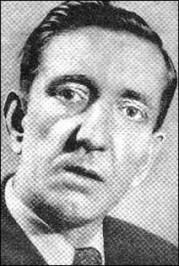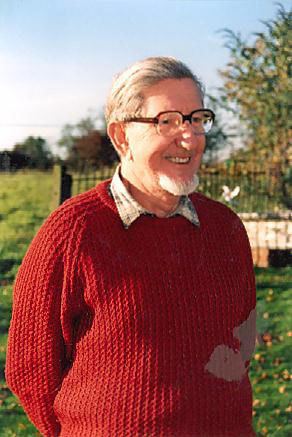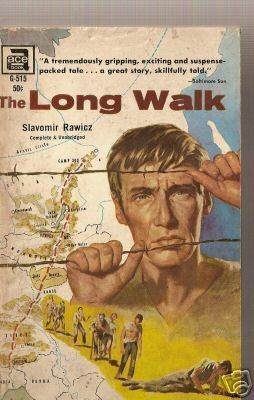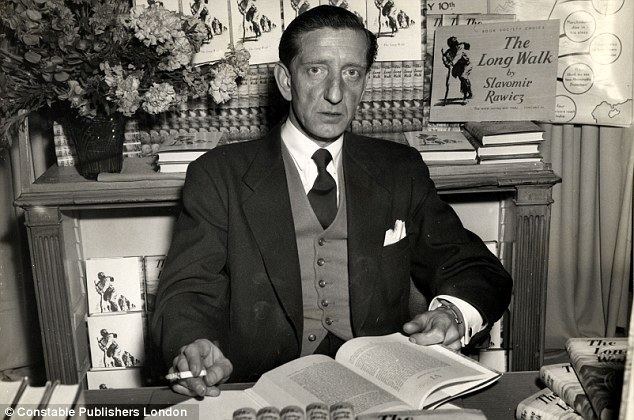Name Slawomir Rawicz Movies The Way Back | Role Reporter | |
 | ||
Died April 5, 2004, Nottingham, United Kingdom Books The Long Walk, Dlugi marsz, Der lange Weg Similar People Peter Weir, Yolanda Toussieng, Greg Funk | ||
Sławomir Rawicz ([swaˈvɔmir ˈravit͡ʂ]; 1 September 1915 – 5 April 2004) was a Polish Army lieutenant who was imprisoned by the NKVD after the German-Soviet invasion of Poland. In a ghost-written book called The Long Walk, he claimed that in 1941 he and six others had escaped from a Siberian Gulag camp and began a long journey south on foot (about 6,500 km or 4,000 mi). They travelled through the Gobi Desert, Tibet, and the Himalayas to finally reach British India in the winter of 1942. In 2006 the BBC released a report based on former Soviet records, including statements written by Rawicz himself, showing that Rawicz had been released as part of the 1942 general amnesty of Poles in the USSR and subsequently transported across the Caspian Sea to a refugee camp in Iran, and that his escape to India never occurred.
Contents
- Early life and army career
- The Long Walk Escape from the Gulag camp and walk to India
- WWII activities after imprisonment
- Historical records
- Postwar life
- The Long Walk
- Other versions and historical research
- References

In May 2009, Witold Gliński, a Polish World War II veteran living in the UK, came forward to claim that the story of Rawicz was true, but was actually an account of what happened to him, not Rawicz. Gliński's claims have been questioned by various sources.

Rupert Mayne, a British intelligence officer in wartime India, claimed to his son to have interviewed three emaciated men in Calcutta in 1942, who claimed to have escaped from Siberia. According to his son, Mayne always believed their story was the same as that of The Long Walk—but telling the story decades later, his son could not remember their names or any details.

Early life and army career

Sławomir Rawicz was born on 1 September 1915 in Warsaw, the son of a landowner. He received private primary education and went on to study architecture in 1932. In 1937 he joined the Polish Army Reserve and underwent the cadet officer school. In July 1939 he married Vera, his first wife. She went missing during World War II.

According to his account, when Nazi Germany and the Soviet Union defeated Poland, Rawicz returned home, where the NKVD arrested him on 19 November 1939. He was taken to Minsk, then sent to Kharkov for interrogation, then to the Lubyanka prison in Moscow, where he was put on rigged trial. He was tortured to make him confess to being a spy which initially was unsuccessful. He was sentenced to 25 years of hard labour in a Siberian prison camp, ostensibly for espionage as were thousands of others. Researchers for the BBC Radio program The Long Walk in 2006 unearthed documents indicating that the charge against Rawicz might have been for killing, in the defence of his country, a Russian NKVD officer.
The Long Walk – Escape from the Gulag camp and walk to India
According to the account in the book, Rawicz was transported, alongside thousands of others, to Irkutsk and made to walk to the Gulag Camp 303, which was 650 km south of the Arctic Circle. His labour duties in the camp included the construction of the prisoners' barracks, the manufacture of skis for the Russian army, and the repair and operation of the camp commandant's radio.

In The Long Walk, Rawicz describes how he and six companions escaped from the camp in the middle of a blizzard in 1941 and headed south, avoiding towns. The fugitive party included three Polish soldiers, a Latvian landowner, a Lithuanian architect, and an enigmatic US metro engineer called "Mr. Smith"; they were later joined by a 17-year-old Polish girl, Kristina. They journeyed from Siberia to India crossing the Gobi Desert and Himalayas. Four of the group died, two in the Gobi, two in the Himalayas. The book also mentions the spotting of a pair of yeti-like creatures in the Himalayas.
According to the book, four survivors of the 11-month trek reached British India around March 1942 and stumbled upon a Gurkha patrol. They were taken to a hospital in Calcutta. Towards the end of the book, Mr. Smith asked Rawicz about his future. Rawicz told Smith he would rejoin the Polish army. Once released from the hospital, the survivors went their own ways. Some were still permanently sick from the hardships of the Long Walk.
WWII activities after imprisonment
According to Rawicz, he moved from India to Iraq, then re-entered the Soviet Union in June 1942 and rejoined the Polish Army on 24 July 1942 at Kermini. He then returned to Iraq with Polish troops and moved on to Palestine, where he spent time recovering in a hospital and teaching in a military school. He claimed that General Władysław Anders had recommended his transfer to Britain for training as a pilot of the Polish Air Forces in Great Britain.
Historical records
Soviet records confirm that Rawicz was a Polish soldier imprisoned in the USSR, but differ from The Long Walk in detail on the reasons for his arrest and the exact places of imprisonment. Polish Army records show that Rawicz left the USSR directly for Iran in 1942, which contradicts the book's storyline. Aside from matters concerning his health, his arrival in Palestine is verified by the records. The story of the escape to India comes from Rawicz himself.
Captain Rupert Mayne, an intelligence officer in Calcutta, years after the war, said that in 1942 he had debriefed three emaciated men claiming to have escaped from a Siberian Gulag camp. Mayne did not provide any further details and did not identify Rawicz as one of the men.
Postwar life
After the war he settled in Sandiacre, Nottingham, England, and worked at the Nottingham Design Centre. He married Marjorie Gregory née Needham in 1947; they had five children. In the early 1970s he became a technician at the Architectural Ceramics course at Nottingham Trent University School of Art and Design. A heart attack forced him into early retirement in 1975. He lived a quiet life with his family, giving public talks and answering fan mail, until his death on 5 April 2004.
Three weeks after Harold Nicolson reviewed The Long Walk for The Observer, the newspaper published a short article entitled "Long Walker", in response to readers' questions about Rawicz's postwar life. In addition to the familiar biographical details to 1956, presumably supplied by author or publisher, the article added: "About his real name he preserves secrecy".
The Long Walk
The Long Walk was ghost-written by Ronald Downing based on conversations with Rawicz. It was released in the UK in 1956 and has sold over half a million copies worldwide and has been translated into 25 languages. The Readers Book Club edition (1958), and the "concise" version (ed. S. H. Burton) brought out by Longmans and Green in their Heritage of Literature Series for schools (1960), helped popularise the book. The "concise" edition went out of print in the late 1980s.
The film The Way Back (released in late 2010), directed by Peter Weir, was inspired by the story.
Over the years, critics of the book's accuracy have included Peter Fleming (Ian Fleming's brother), Eric Shipton, and Hugh E. Richardson, a British diplomat stationed in Lhasa.
Other versions and historical research
Various people have researched the veracity of the story. Examples include:
Leszek Gliniecki has copies of official documents which state that Witold Glinski was born in 1926 (22 November), was sent into forced exile to a special settlement Kriesty in Arkhagelsk Oblast (Province), Russia, and stayed there from 24 February 1940 to 2 September 1941. This is confirmed by the international organisation "Memorial", the Polish Institute of National Remembrance and the Arkhangelsk Province archives. The above information would not allow Witold Glinski to take part in the Long Walk. Archives of the Polish Army in the West, and his death certificate confirm that Witold Glinski was born in 1926. Citations from: 1. "Memorial": Victims of political terrorism in USSR; 2. Polish Institute of National Remembrance (IPN): INDEKS REPRESJONOWANYCH (Index of Victims of Soviet Repression) tom XIV częśc (part)2; 3. Arhangelsk Department of Internal Affairs, Information Centre; 4. Ministry of Defence, APC POLISH ENQUIRES, Ruislip England, 5. Certified copy of an entry (BAX 935402) that Witold Glinski born 22 November 1926 died on 19 April 2013.
